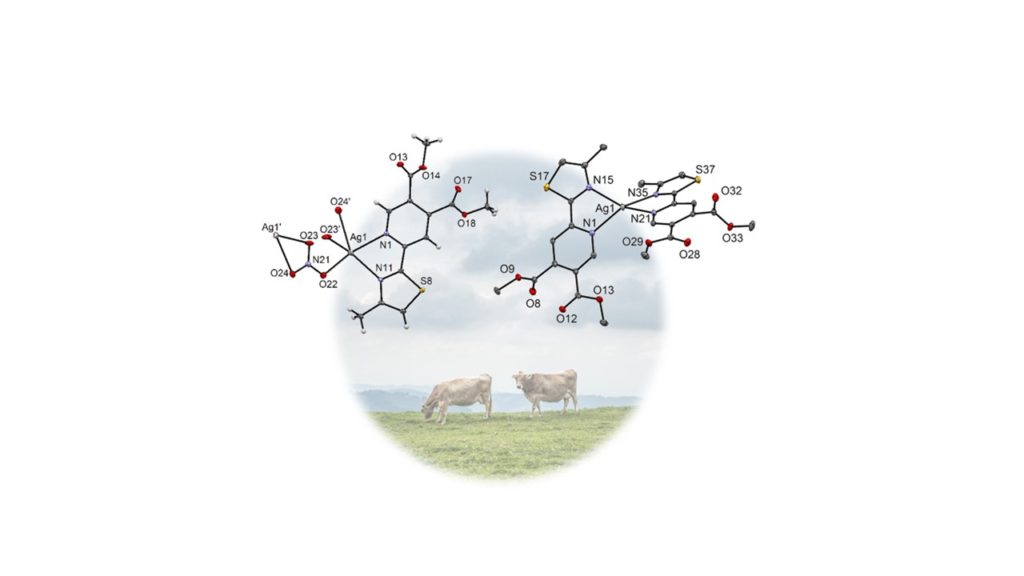People were using metals and metal compounds for the treatment of various diseases for millennia. Nowadays chemists rationally synthesise metal complexes with the aim to use them in medical practice.
Without any doubt, the most well-known drug of this type is cisplatin which is a famous anticancer drug. In our labs the most efforts were put in the research of novel anticancer agents, mostly based on ruthenium, which was frequently described in our previous posts.
However, my research career started by investigating metal complexes of antiviral drug acyclovir (acv). My very first paper was on coordination chemistry of a copper(II)-acv complex [1]. Later, several isolated copper-acv complexes were tested for antiviral activity (Herpes Simplex Virus, HSV) but results were not very promising [2]. In 2020 coronavirus disease 2019 (COVID-19) caused by severe acute respiratory syndrome coronavirus 2 (SARS-CoV-2) shocked us all. Due to the COVID-19 pandemic, many researchers are now trying to find a drug (or suitable methods) to treat this disease. It is also promising that funding options for coronavirus research appeared very quickly and worldwide research consortia are working towards the common goal. We are also considering joining the effort though very quick solutions are not very probable in this field of research.
In previous years, our metal complexes were also tested for antibacterial, antifungal and other antimicrobial activities [3-5]. Our last contribution in this direction is a recently accepted joint paper (cooperation with groups of Jasmina Nikodinovic-Runic and Milos Djuran from Serbia) accepted in Dalton Transactions. In this paper we have studied silver complexes with pyridine-4,5-dicarboxylate type of ligands. Infections of the cow udder leading to mastitis and lower milk quality are one of the biggest problems in the dairy industry worldwide. Unfortunately, therapeutic options for the treatment of cow mastitis are limited as a consequence of the development of pathogens that are resistant to conventional antibiotics. Therefore, new antibacterial agents are needed and our silver complexes have so far shown promising results.
We all hope that funding agencies will now be encouraged to more strongly support the research of novel antimicrobial compounds. For example, it is well-known that experts are warning about superbugs, bacteria that are resistant to most available antibacterial agents [6]. It would surely not be good to wait so unprepared for something to happen as in the case of coronavirus.
- B. Blažič, I. Turel, N. Bukovec, P. Bukovec and F. Lazarini, Synthesis and Structure of Diaquadichlorobis 9-(2-Hydroxyethoxy)-Methyl Guanine Copper(II), J. Inorg. Biochem., 51, 737 -744 (1993).
- M. Panteva, T. Varadinova, I. Turel, Effect of Copper Acyclovir Complexes on Herpes Simplex Virus Type 1 and Type 2 (HSV-1, HSV-2) Infection in Cultured Cells, Metal Based Drugs, 5, 19-23 (1998).
- I. Turel, L. Golič, P. Bukovec, M. Gubina, Antibacterial tests of Bismuth(III)-Quinolone (Ciprofloxacin, cf) Compounds Against Helicobacter pylori and Some Other Bacteria. Crystal Structure of [(cfH2)2 Bi2Cl10] .4H2O, J. Inorg. Biochem., 71, 53-60 (1998).
- J. Kljun, I. Bratsos, E. Alessio, G. Psomas, U. Repnik, M. Butinar, B. Turk, I. Turel, New uses for old drugs: attempts to convert quinolone antibacterials into potential anticancer agents containing ruthenium, Inorg. Chem., 52, 9039–9052 (2013).
- J. Kljun, A. J. Scott, T. Lanisnik Rizner, J. Keiser, I. Turel, Synthesis and biological evaluation of organoruthenium complexes with azole antifungal agents. First crystal structure of a tioconazole metal complex, Organometallics, 33, 1594−1601 (2014).
- R. Rappuoli, D. E. Bloom, S. Black, Deploy vaccines to fight superbugs, Nature, 552, 165-167 (2017).
